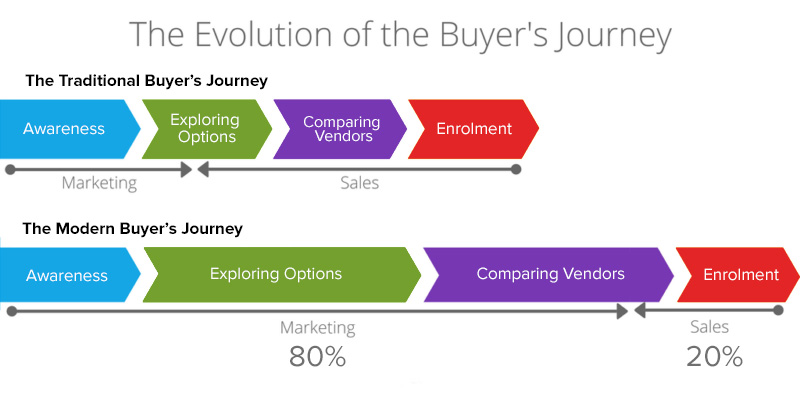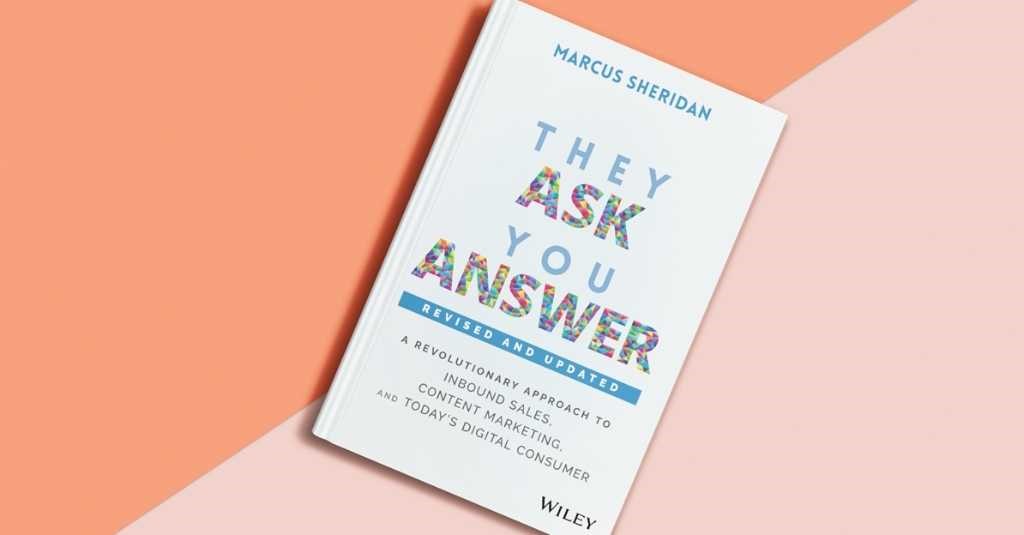So, you’ve heard about They Ask, You Answer (TAYA) and you’re ready to take your business to the next level by implementing this framework. But, you’re wondering, is TAYA right for me?
What’s RedPandas Coaching? Is it right for you?
At RedPandas we recognise that while TAYA is a powerful system to utilise for any business, that doesn’t mean it’s the best fit for everyone. While we help clients insource their marketing so that they never need an agency again, we continue to offer Done For You services such as:
- Paid media performance management
- HubSpot Onboarding & Optimisation
- SEO
- Content marketing strategy and execution
- Website design and development
- API integrations
If TAYA is right for you, then our Coaching program may fit your needs. On the other hand, if coaching isn’t right for you, then our Done For You services may be a better suit.
In this article, we’re going to help you figure out if TAYA is right for you by looking at:
What is TAYA?

They Ask You Answer (aka TAYA) is a practical framework and sales and marketing philosophy that assumes one simple truth: if your prospect or customer asks a question, you answer, and in doing so, you will become the most trusted voice in your space and will gain more business than you ever have before.
TAYA creates revenue teams in organisations by combining marketing and sales and results in shorter sales cycles and increased close rates. It does this by encouraging sales reps to adopt assignment selling, which is where they assign homework to prospects of content that answers common questions received during the sales process. This can be as simple as sharing specific articles with the prospect to read during the sales process.
In this way, TAYA has an enormous impact on the bottom line because of its direct impact on sales. If you want a more in depth explanation of TAYA, check out this article.
The Benefits of TAYA

There are seven major benefits of They Ask, You Answer on sales teams (and ultimately on the bottom line):
- Producing content forces us to understand the buyers and the way they think. When we start listening more intently, we get to know and understand the customer more than ever before.
- Producing content is magical when it comes to sales messaging. All of your sales team end up becoming subject matter experts which massively impacts close rates.
- Company content acts as a training guide for new employees.
- Using content in the sales process to give assignments to your prospects (aka Assignment Selling) dramatically shortens the sales cycle and increases close rates, leading to more revenue more quickly. It also positions your business as trusted advisors.
- Sales teams can learn, through website analytics, what prospects and customers truly care about before they enter the sales funnel. Imagine knowing exactly what articles your prospect has read prior to jumping on the call. This changes the way we do sales presentations and calls because EVERYTHING becomes data backed. This is what happens when marketing becomes integrated with sales.
- With content, a relationship of trust can be built with a salesperson and company before the first sales meeting ever happens. A prospect who has read 10 articles before entering a sales meeting is going to perceive the company far differently to a prospect who has never read any piece of content from the company.
- Great content means more trust, more trust means shorter sales cycles, shorter sales cycles means happier sales and marketing teams.
If you can successfully implement TAYA within your business, you won’t only be positively impacting your bottom line, but you’ll be positively impacting the happiness of your sales team. You’ll become the most trusted voice in your space. You will wildly transform your entire company.
In saying this, TAYA might not be right for your company. Let’s explore this.
The 3 Factors Required for TAYA
There are three factors required for TAYA to be useful to any organisation:
- Willingness to address buyer concerns transparently on your website
- Leadership buy-in
- Investing in-house
Willingness to Address Buyer Concerns Transparently on Your Website
Did you know that on average, today’s buyer has already made 80% of the buying decision BEFORE the first sales call? With the internet being the predominant point of research for most buyers, there is less of a reliance on the sales or customer service people of a business. As such, today’s buyer has generally already decided on exactly what they want before they even speak to a salesperson, because they’ve done all of their research online already.

This number has been increasing over time and we predict that it will continue to increase as the growing trend towards digital continues.
As such, if we don’t answer buyer’s questions transparently and completely, they’re going to go somewhere else.
Therefore, there must be a willingness to address buyer concerns transparently on your website. Generally, this means answering questions around the Big 5 topics:
- Cost and pricing
- Problems
- Comparisons and versus
- Best of lists
- Reviews
These five topics are the most common topics when buyers are researching before making a purchasing decision. However, sometimes there is reluctance to write content around these topics for several reasons.
In order for TAYA to be right for you, this reluctance needs to be overcome. Below, we explore the Big 5 and some of the reasons that businesses might not be willing to address buyer concerns transparently.
Cost & Pricing
This means displaying your pricing (or at least your price range) and explaining in detail the factors which influence your pricing.
Businesses will generally argue that they don’t want to show this on their website for three reasons:
- “Our products / services are custom-designed to individual situations”. While many factors influence the final cost for some businesses and prices can vary, you should write about the factors that influence costs and give a range of possible rates.
- “But then our competitors would know what we’re charging”. Do you know what your competitors are charging? You probably answered yes. In that case, don’t you think they already know what you’re charging?
- “It might scare away prospects”. Being up front about your costs helps qualify and disqualify prospects from the get-go, which saves your sales team time and attracts the right customers to your business.
Problems
There are two types of problem articles you want to be writing:
- Shortcomings or problems with your product/service
- Problems that your prospect has and how your solution solves this for them
You might be hesitant to reveal your own shortcomings, but here’s the thing. When do we search for the problems of something? When we’re interesting in buying it! So it makes sense if a prospect is searching for that information, you are owning that conversation.
Let’s be real – if you know what your own shortcomings are, your prospects will find out too with a little bit of research. So, by being upfront and transparent from the get-go, you build trust with your prospects which makes them choose you despite your shortcomings.
Comparisons & Versus
Prospects will also be researching alternative solutions to make sure they’re making the right decision. By writing articles comparing different solutions, you’re helping your prospects find the information they need without them ever having to leave your website.
This builds trust through education, and more importantly it ensures your prospect makes the right decision, whether that means working with you or working with someone else. In this way, you’ll only work with customers who are a good fit.
“Best of” Lists
This involves writing articles around:
- Best competitors
- Best in class (i.e., “best tents for winter camping”)
- Best practices
You may worry that writing an article listing all your top competitors will steer prospects away from your business.
But let’s be honest: they’re going to find out about your competition anyway. If you write a competitors focused article introducing them to all the vendors, they’re at least reading the information on your site, and you have the first chance to convert them into a lead
Reviews
Buyers want to know how others felt about making the decision that they’re about to make.
If you can write honest reviews of the products you sell (and even don’t sell), you’ll connect with more prospects looking for help making purchases. In fact, 95% of buyers report reading reviews before making a purchase.
Leadership Buy-in
Senior leadership buy-in is another factor that must be present for TAYA to be right for you. For TAYA to work effectively, it needs to become more than just a marketing initiative.
It needs to act as a revenue driving activity in the business, which is led by senior leadership, marketing, and sales. Only then, when there is true harmony between these three teams will there be results.
If senior leadership does not believe in TAYA, or if they’re not willing to be a part of the journey that TAYA involves, then the revenue generating effort will be for naught.
As such, if TAYA is right for you, you’ll have to have senior leadership buy-in.
Investing In-house
We often find that companies come to us in a state of frustration after working with agencies that didn’t produce the expected results. These same businesses are looking for an external solution, without considering taking their marketing in-house.
The final factor which is required for TAYA to be right for you is that you need to be willing to invest in growing your in-house marketing and sales team, effectively taking your marketing in-house so that you never need an agency again.
This sounds like something any business would say yes to, however, this comes with a cost. Investing in-house means having the ability to hire team members on a full-time basis. On top of this, it involves hiring a coach such as RedPandas to help you implement They Ask, You Answer.
Although hiring a TAYA certified company like RedPandas is more expensive in the short-term, consider the fact you are investing in building in-house skill so after a 12-18 month engagement with us, you never need to hire another agency indefinitely again.
Organisational Size & Revenue
We believe EVERY business of EVERY size should adopt TAYA and the principles of trust and being the teacher in their industry as a cornerstone of sales and marketing. However, for a solopreneur, paying a partner like RedPandas may be too high of an investment.
In general, the smallest sized companies who have engaged us for TAYA training and coaching have at least $1M in revenue and at least one marketing point of contact and a sales point of contact.
The average size of TAYA clients is $5M and some of biggest clients are in the $200M-$500M space.
If you want to learn more about exactly how much TAYA costs, check out this article.
So, is TAYA right for me?
To sum up, if TAYA is right for you, then you’ll need to meet three criteria:
- Willingness to address buyer concerns transparently on your website
- Leadership buy-in
- Investing in-house
If you meet these three criteria, then TAYA is probably right for your organisation. If this is you, get in touch with us and let’s see if we’re a good fit.
If you’re interested in learning more about TAYA, check out the following links:













